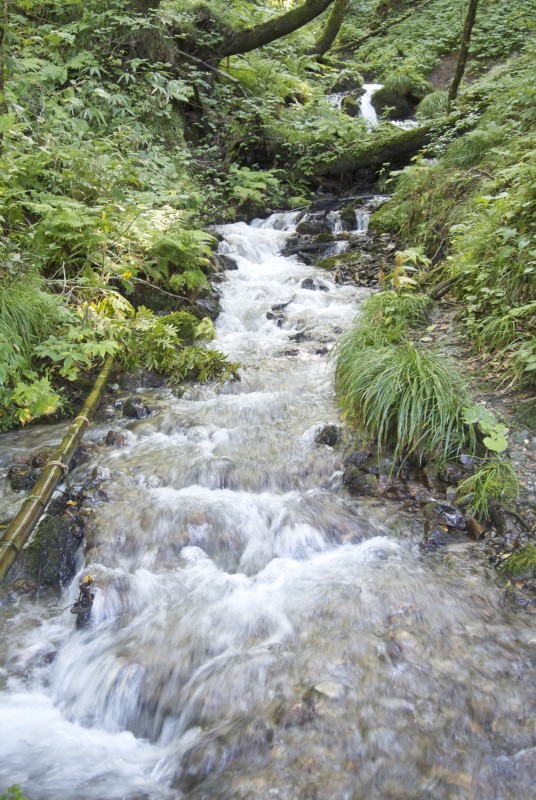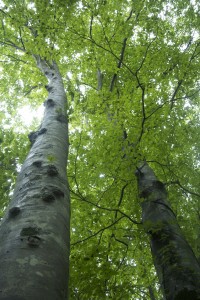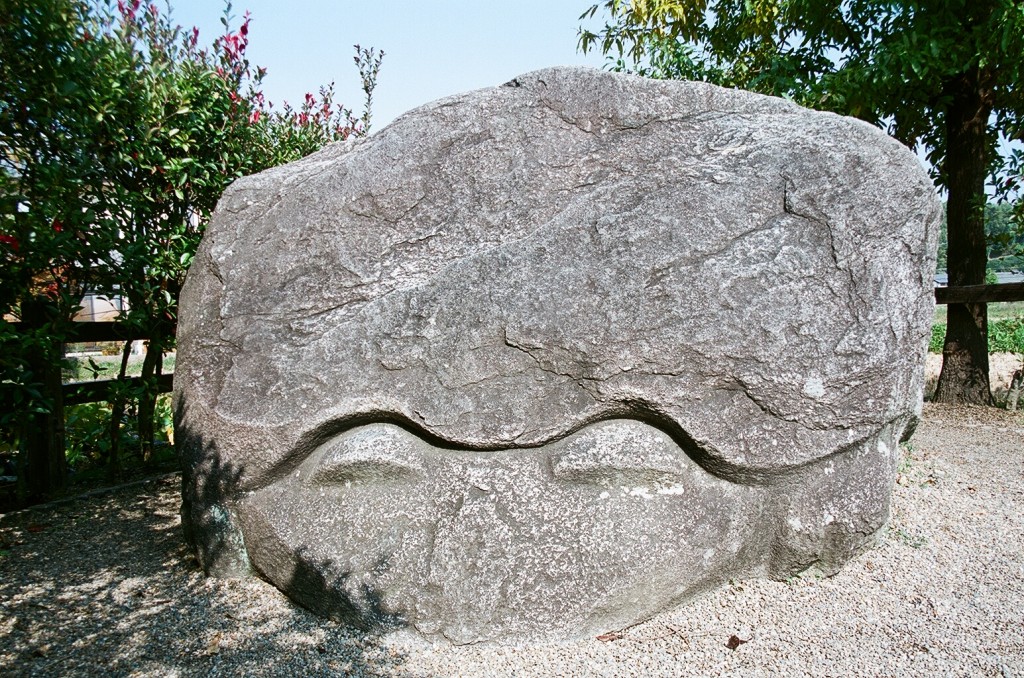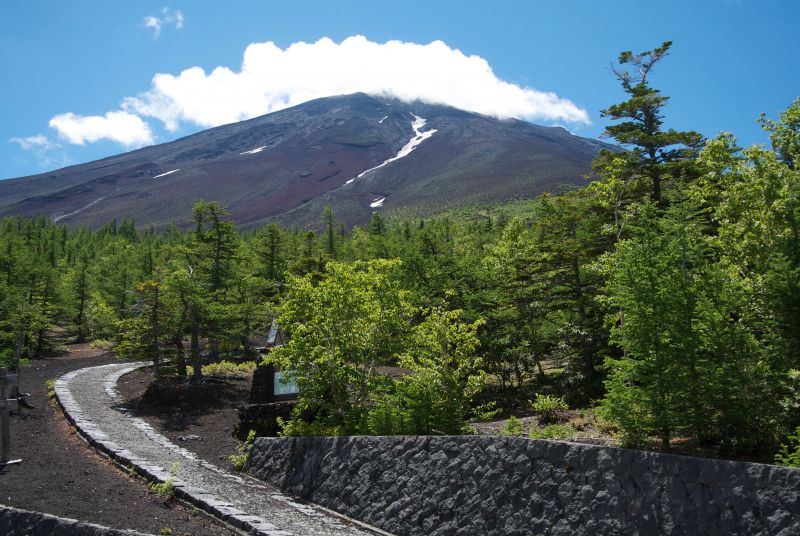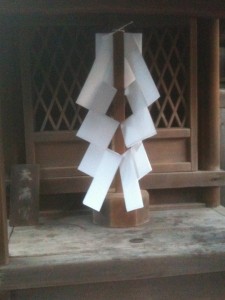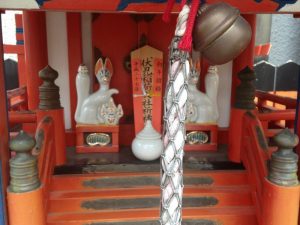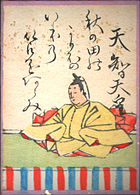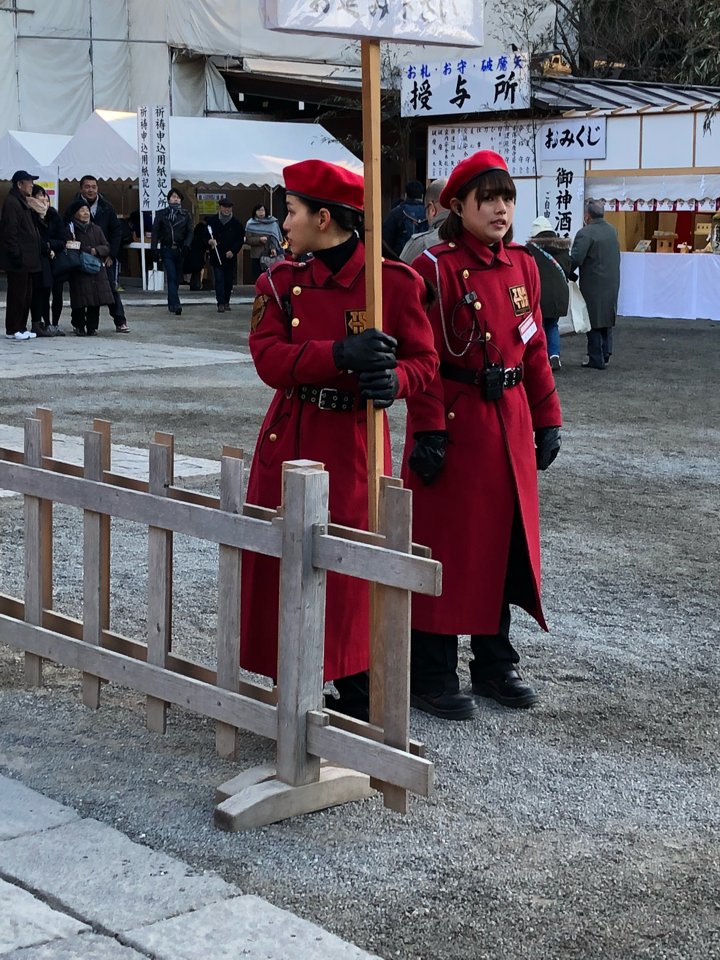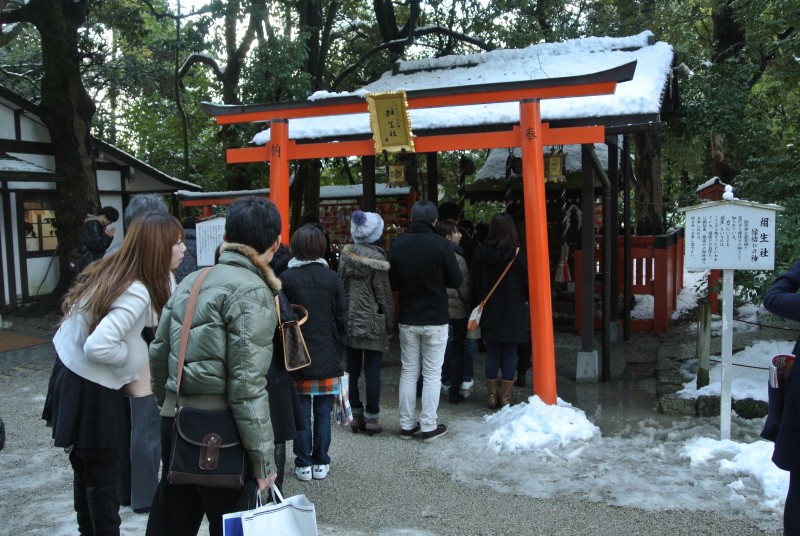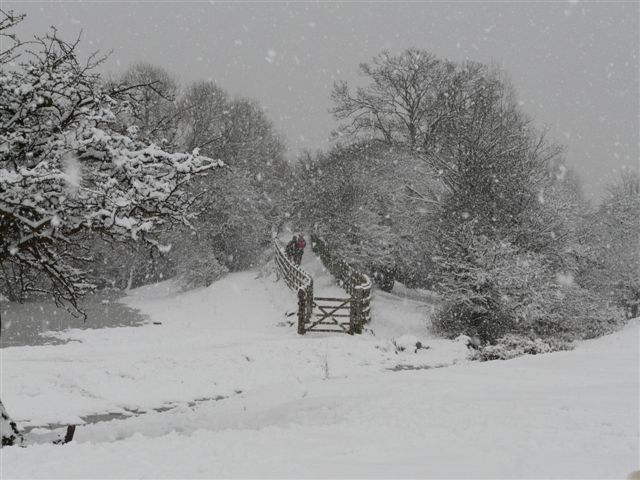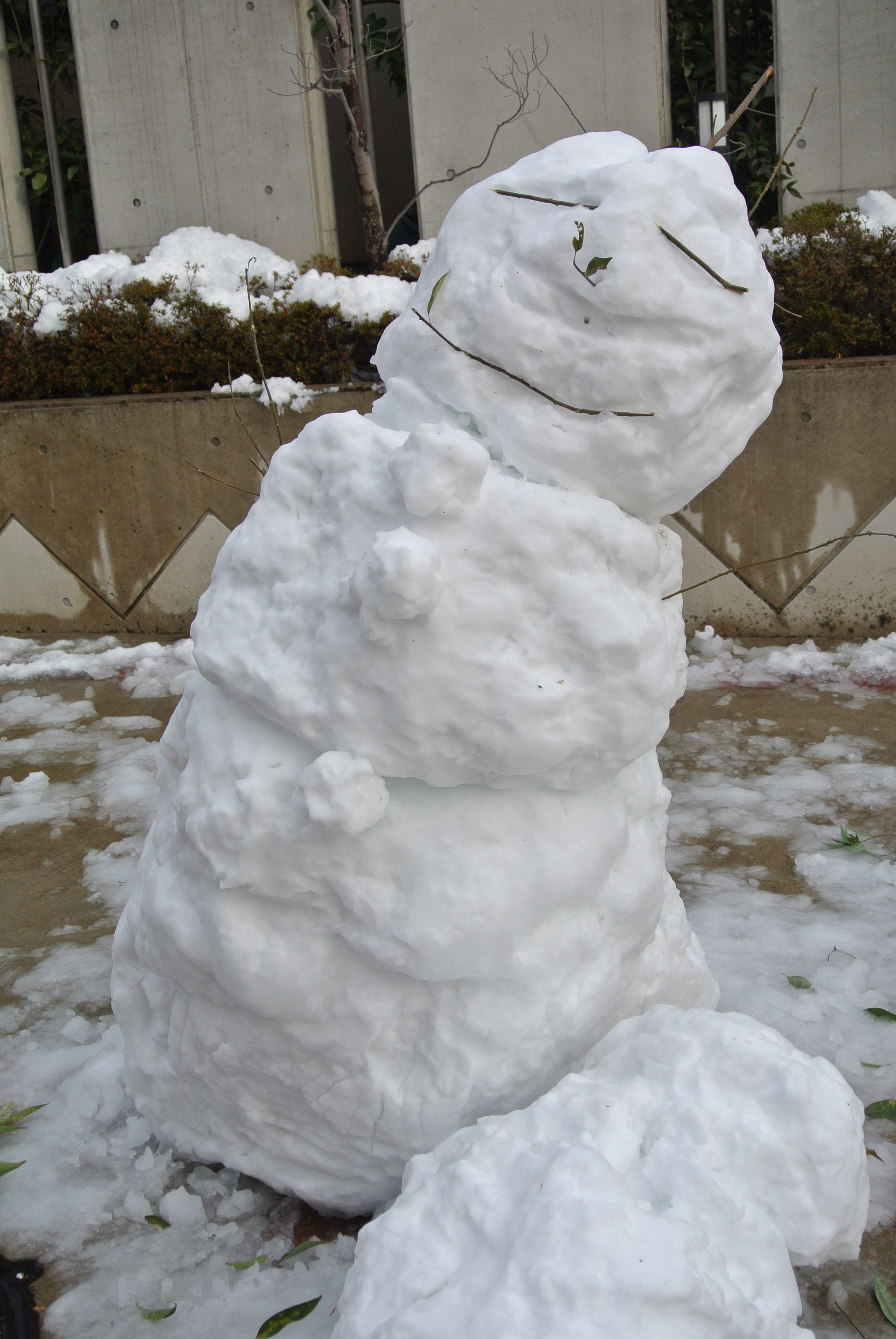Rudimentary, vague, undefined, undefinable, Shinto for centuries didn’t even have a name. It didn’t need one; there was nothing to distinguish it from, nothing it was not. One good sentence can say everything there is to say about it — this one, for example, by historian Takeshi Matsumae: “In some rural areas even today (1993), elderly villagers face the rising sun each morning, clap their hands together, and hail the appearance of the sun over the peaks of the nearby mountain as ‘the coming of the kami.’”
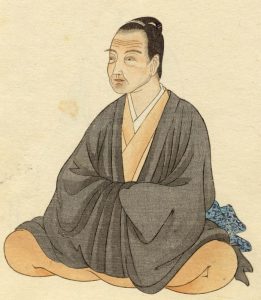
The scholar Motoori Norinaga (1730-1801) | Public domain
That’s Shinto — the way (“to”) of the kami (“shin”). As to the kami — who might they be? “Gods,” we say in English, the language offering nothing better, but it’s too freighted a word, too suggestive of power rather than innocence, of something specific as opposed to anything, one knows not what.
“I do not yet understand the meaning of the word ‘kami’” wrote Motoori Norinaga in 1771. If he didn’t, who did? Norinaga was the foremost scholar of his age; he devoted his life to studying the native literature from its ancient beginnings. “It is hardly necessary to say,” he continued, “that it includes human beings. It also includes such objects as birds, beasts, trees, plants, seas, mountains and so forth. In ancient usage, anything whatsoever that was outside the ordinary, which possessed superior power or which was awe-inspiring, was called kami. … Evil and mysterious things, if they are extraordinary and dreadful, are called kami.”
Shinto teaches nothing, enjoins nothing, demands no submission, works no miracles, effaces evil by cleansing it, transmutes dread into joy. There is no heaven, no hell, no nirvana — just “the rising sun each morning,” “the coming of the kami.”
Troubled times such as ours evoke many longings, not least the one known as primitivism. Why couldn’t things have remained in their pristine state? It’s a mood as old as progress “Take away our baneful progress …” wrote the Swiss philosopher Jean-Jacques Rousseau in 1762, “and all is well.”
A Japanese variant of that mood is traceable back to the sixth century. A civil war fought in 587, says historian Ivan Morris, was “one of the decisive clashes in Japanese history,” though the fighting was on so small a scale that “the battle has not even received an official name.”
At issue was the advent of a strange, foreign religion — Buddhism. Some years earlier a Korean ambassador had come bearing images, books and news of “a wonderful doctrine … of all doctrines the most excellent … hard to explain and hard to comprehend,” but through it “every prayer is fulfilled.”
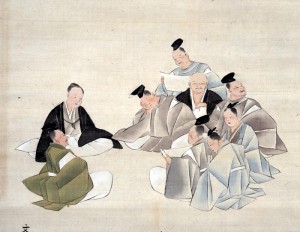
Norinaga Motoori and his disciples of the Kokugaku school (source unknown)
Emperor Bidatsu (reigned circa 572-585) “leaped for joy” to hear it, says the eighth-century chronicle “Nihon Shoki.” “Never,” said Bidatsu, “from former days until now have we had the opportunity of listening to so wonderful a doctrine.” Wonderful, but unsettling. What would the native gods — the kami — think? What might they do, what havoc unleash, in their anger?
Powerful clans ranged on both sides of the ensuing controversy. The Nakatomi and Mononobe, hereditary ritualists and hereditary warriors respectively, both claiming descent from gods, joined forces in defense of the kami against the upstart Soga, who, on behalf of Buddhism, pleaded, “All the Western frontier lands (China and Korea), without exception, worship it. Shall Yamato (Japan) alone refuse to do so?”
Why not? countered Nakatomi and Mononobe: “Those who have ruled the Empire in this our state have always made it their care to worship … the 180 kami of heaven and earth, the kami of the land and of grain. (If) we were to worship in their stead foreign deities, it may be feared that we should incur the wrath of our national kami.”
Bidatsu leaned toward Soga. A pagoda was built, Buddhist images were worshipped — and pestilence broke out. The kami had spoken. A Buddhist statue was flung into a canal, three foreign child-nuns were publicly whipped in the market-place, and the new faith went underground — only to resurface when, shortly afterward, a recurrence of plague gave it a second chance. Bidatsu’s successor, Yomei, “believed in the law of Buddha and (simultaneously) reverenced Shinto” — seeing nothing mutually irreconcilable in them, worlds apart though they are in spirit. This “Nihon Shoki” passage gives Shinto its name.
Yomei died. A quarrel among would-be successors flared into the war of 587. Soga triumphed. Buddhism was in. Japan’s childhood was over.
Through Buddhism, Japan — primitive, almost prehistoric — entered the dazzling orbit of Chinese civilization. The pivotal figure was Crown Prince Shotoku Taishi (574-622), whose famous “constitution” of 604, fusing Buddhist and Confucian moral precepts, marks Japan’s coming of age.
Harmony, hierarchy and willing obedience from those below to the wise commands of those above became the main themes. On the kami, the document is mute. No wonder, perhaps; the kami had no moral precepts, no morality at all. “All things in heaven and earth are in accordance with the august will of the kami,” said Norinaga 11 centuries later. Good or bad, good or evil, is beside the point: “Among the kami there are good ones and bad ones. Their actions are in accordance with their different natures, so they cannot be understood by ordinary human reason.”
Norinaga’s work contains passages of great beauty. The heart, not the mind, emotion, not reason, lead man to wisdom, he taught. It’s a concept known as mono no aware (the pathos of things). There’s an appealing innocence in his writing. But eschewing “ordinary human reason” is a dangerous business. How he would have felt about the later xenophobic militarists who drew much of their inspiration from him is an open question.
***************
Michael Hoffman is the author of In the Land of the Kami: A Journey into the Hearts of Japan and Other Worlds.
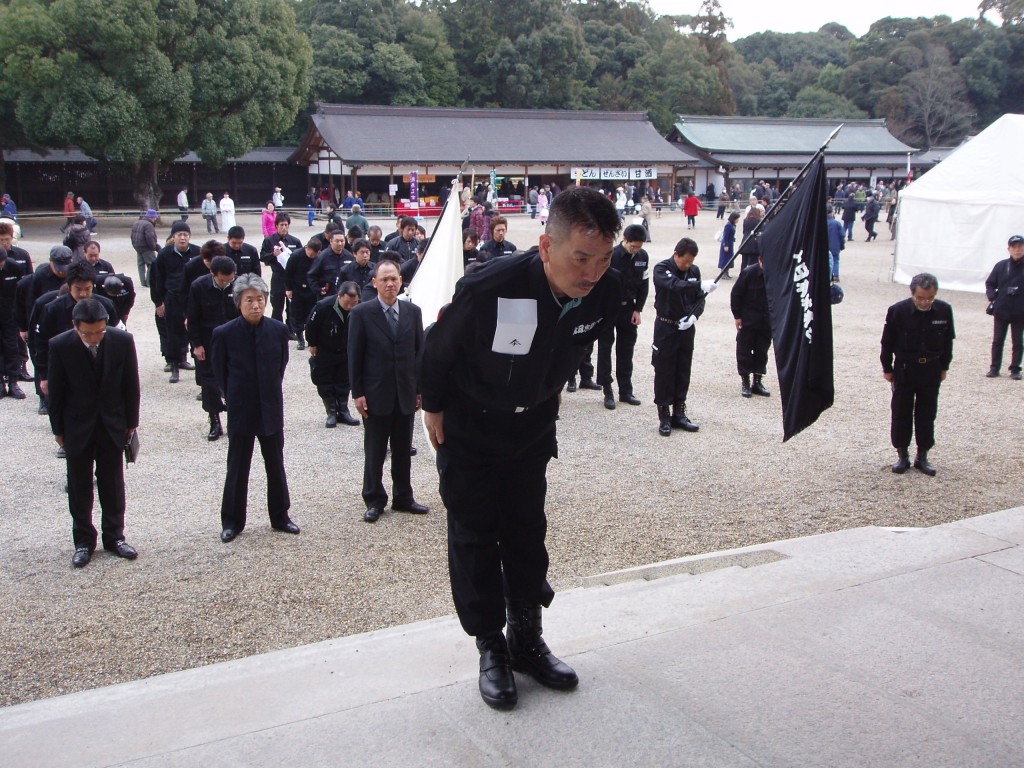
Adulteration: Paramilitary group worshipping legendary first emperor Jimmu at Kashihara Jingu
